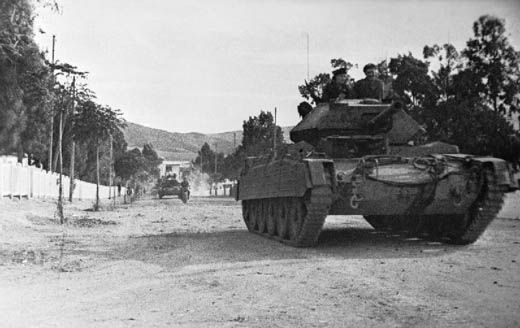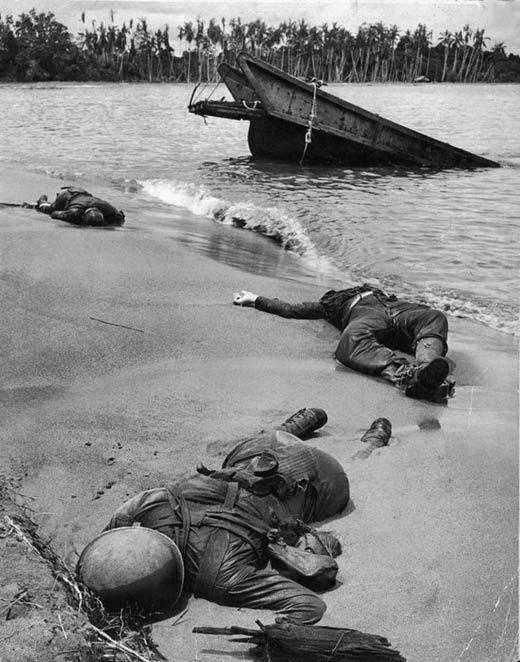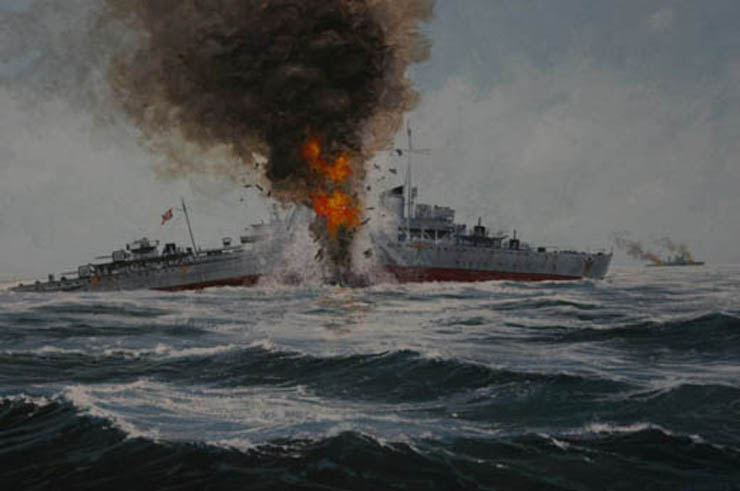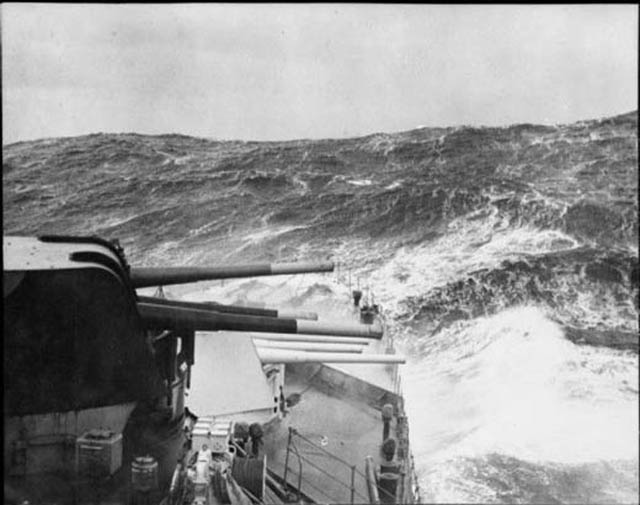Air Operations, Aleutians
6 28th Composite Bomb Group B-24s and 9 343d Fighter Group P-38s claim direct hits on two cargo ships in Kiska harbor. 2 343d Fighter Group P-38s down an A6M2-N 'Rufe' fighter-bomber over Kiska at 1430 hours.
[Air Operations, Bismarcks
- 90th Heavy Bomb Group B-24s attack the Gasmata airfield on New Britain and shipping near Rabaul.
- Combat and reconnaissance aircraft on missions over the Rabaul area note the largest concentration of Japanese shipping ever sighted in the regionó21 Japanese Navy warships and 70 merchant-type vessels.
Air Operations, CBI
BURMA- 23d Fighter Group P-40s mount an armed reconnaissance and attack rail targets of opportunity between Naba and Pinbaw.
Air Operations, Europe
BOMBER COMMANDDaylight Ops:
- 6 Mosquitos attack various targets in France without a loss.
- In a trial raid, 8 Lancasters and 2 Oboe Mosquitos are sent to Düsseldorf. The Mosquitos are to drop target markers using Oboe. Only 1 of the planes does so. Reports from the ground indicate 6 industrial areas are hit without causing serious damage. 12 peopla are killed and 34 are injured. Later in the night 3 more Oboe Mosquitos are sent to hit the night-fighter control room at the Florennes airfield in Belgium. 2 Mosquitos use their Oboe equipment and drop 6 high-explosive bombs through the clouds. The results are not known.
- There are no losses.
- 29 aircraft lay mines off the Biscay ports and there are 8 OTU sorties.
- 1 mine-laying Wellington is lost.
Air Operations, New Guinea
- V Bomber Command B-26s attack targets along the Markham River.
- 3d Light Bomb Group A-20s attack Japanese Army ground troops in the Sanananda and Giruwa areas and along the Amboga River.
- 39th Fighter Squadron P-38s shoot down 10 A6M Zeros near the airfield at Lae between 1210 and 1235 hours.
Air Operations, Solomons
In their combat debut from their new base on Guadalcanal, 69th Medium Bomb Squadron B-26s, escorted by P-38s and P-39s, attack the airfield at Munda Point, New Georgia.
[Air Operations, Tunisia
- IX Bomber Command B-24s, accompanied by RAF Liberators, attack shipping and port facilities at Sfax.
- XII Bomber Command B-17s, with fighter escort, also attack Sfax harbor.
- 12th Air Force A-20s, with fighter escort, mount two attacks against the marshalling yards and port at Sousse.
- 12th Air Force B-26s, with fighter escort, attack Gabes Airdrome and shipping and rail bridges in the Bizerte and Tunis areas.
- XII Fighter Command P-38s on recon missions claim the destruction of several motor vehicles.
Atlantic
Battle of the Barents Sea or Operation REGENBOGEN (RAINBOW). The Lützow and the Admiral Hipper make repeated, bungled, attempts to destroy Convoy JW-51B, after which the Lützow is to break out into the Atlantic in Operation MORGENRÖTE (AURORA).
Resourceful tactics by British destroyers and cruisers plus extraordinary vacillation of German commanders results in a fiasco. The British destroyer Achates and the minesweeper Bramble are lost, but the convoy escapes intact and the Germans retire ignominiously to Norway losing 1 destroyer. 113 are lost on the British destroyer, 81 are rescued. 120 are lost on the minesweeper.
|
|
An Image from the Battle of the Barents Sea |
 |
Hitler is beside himself with fury and orders the immediate scrapping of the battle fleet.
[Diplomatic Relations
The International Red Cross is now spending £375,000 per month on food parcels for PoWs.
[ Crusader Mk III Tanks in Tunisia |
 |
Eastern Front
SOUTHERN SECTORThe Soviet 5th Shock Army recaptures Tomorsin as the Germans recreate XXIX Corps around Morozovsk. Operations URANUS and LITTLE SATURN have compelled Hitler to order an evacuation from the Caucasus, with XL Panzer Corps withdrawing from the Terek.
The Red Army has achieved much since November 19. However, it has paid a high price in blood for its successes: Southwestern Front, 64,600 killed and missing; Stalingrad Front, 43,000 killed and missiong; Northern and Black Sea Groups, 132,000 killed and missing.
There has also been operational shortcoming, especially with regard to coordinating infantry and armored units: as the tank corps advanced, the infantry fell behind and were unable to catch up once German forces moved in. Such was the fate of the XXIV Tank Coprs at Tatsinskaya, for example. In addition, poor coordination between the tanks corps allowed the Germans to engage them in a piecemeal fashion and inflict heavy casualties.[MORE]
[Guadalcanal
The 2nd Battalion, 132nd Infantry, reaches Hill 11, east of the Gifu strongpint, the line of departure for the enveloping movement.
[Japan, Strategy
The Japanese decide to evacuate Guadalcanal and establish a new defense line in New Georgia.
[New Guinea
Urbana Force begins the envelopment of Buna Mission. Company E, 127th Infantry, and Company F, 128th Infantry, cross the shallows east of Buna Village before dawn and, although the Japanese offer strong opposition upon being alerted, advance about 200 yards along the spit extending from Buna Mission. Other elements of Urbana Force maintain pressure on the enemy from the southeast and finish clearing Government Gardens, but the enemy retains positions in the swamp north of the gardens. Patrol contact is made between Urbana and Warren forces.
Warren Force finishes regrouping. The fresh Australian 2/12th Battalion is disposed on the left, the 3rd Battalion of US 128th Infantry in the center, and the Australian 2/10th on the right.
With the arrival of additional cargo at Oro Bay by sea, supplies moved this way since the first vessel arrived on 11 December total some 4,000 tons.
American Dead on Buna Beach


